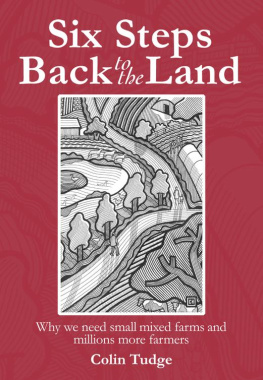Hitlers Rival
HITLERS
RIVAL
Ernst Thlmann
in
Myth and Memory
RUSSEL LEMMONS
Copyright 2013 by The University Press of Kentucky
Scholarly publisher for the Commonwealth,
serving Bellarmine University, Berea College, Centre College of Kentucky, Eastern Kentucky University, The Filson Historical Society, Georgetown College, Kentucky Historical Society, Kentucky State University, Morehead State University, Murray State University, Northern Kentucky University, Transylvania University, University of Kentucky, University of Louisville, and Western Kentucky University.
All rights reserved.
Editorial and Sales Offices: The University Press of Kentucky
663 South Limestone Street, Lexington, Kentucky 40508-4008
www.kentuckypress.com
17 16 15 14 13 5 4 3 2 1
Library of Congress Cataloging-in-Publication Data
Lemmons, Russel, 1962-
Hitlers rival : Ernst Thlmann in myth and memory / Russel Lemmons.
pages cm.
Includes bibliographical references and index.
ISBN 978-0-8131-4090-2 (hardcover : alk. paper)
ISBN 978-0-8131-4091-9 (epub) ISBN 978-0-8131-4092-6 (pdf)
1. Thlmann, Ernst, 1886-1944. 2. CommunistsGermanyBiography. 3. CommunismGermanyHistory20th century. 4. GermanyPolitics and government1918-1933. 5. SocialismGermanyHistory20th century. 6. National socialism. 7. Propaganda, CommunistGermany (East) I. Title.
HX274.7.T47L46 2013
335.43092dc23
This book is printed on acid-free paper meeting the requirements of the American National Standard for Permanence in Paper for Printed Library Materials.
Manufactured in the United States of America.
| Member of the Association of
American University Presses |
For SunshineContents
Abbreviations
AIZ | Arbeiter Illustrierte Zeitung |
CDU | Christian Democratic Union |
Comintern | Communist International |
CPSU | Communist Party of the Soviet Union |
CPUSA | Communist Party in the United States of America |
DEFA | Deutsche Film Aktiengesellschaft |
DKP | West German Communist Party |
DVP | German Peoples Party |
ECCI | Executive Committee of the Communist International |
FDJ | Free German Youth |
FRG | Federal Republic of Germany |
FSJ | Free Socialist Youth |
GDR | German Democratic Republic |
IML | Institute for MarxismLeninism |
KAPD | Communist Workers League of Germany |
KJVD | Communist Youth League of Germany |
KPD | German Communist Party |
NATO | North Atlantic Treaty Organization |
NSDAP | National Socialist German Workers Party |
PDS | Party for Democratic Socialism |
POW | prisoner of war |
RFB | Red Front Fighters League |
SBZ | Soviet Zone of Occupation |
SED | Socialist Unity Party |
SPD | German Social Democratic Party |
Ufa | Universium-Film Aktiengesellschaft |
USPD | Independent Social Democratic Party |
VVN | Association for the Victims of Nazi Persecution |
Introduction
Myths have always played in important role in legitimizing politics, and among these myths is that of the fallen hero. Homers Iliad and Odyssey promote cults of romanticized heroessuch as Achilles and Hectorwho died so that others might live. Plato in his Republic calls for the building of altars to commemorate those who perished in order to preserve Greek culture. Jesus of Nazareths sacrificial death plays a central role in Christian theology.
Even in recentsupposedly more sophisticatedtimes, the cult of the fallen hero who dies in order to further a political cause has continued to play a vital role, especially in legitimizing totalitarian governments on both the right and the left. As Nina Tumarkin has pointed out in her two very successful books, Lenin Lives! and The Living and the Dead, the Soviet Union based its legitimacy on the cult of the fallen hero, first of Vladimir Ilich Lenin, then of those who perished during the Great Patriotic War against fascism. Although Lenin might not literally have died in battle against the class enemy, his unceasing effort to promote the benefit of the toiling masses undoubtedly contributed to his demise at a relatively young ageat least in the eyes of Soviet propagandists. In the contemporary United States, the site of the World Trade Center, where more than 3,000 Americans perished on 11 September 2001, has become sacred ground. These victims have become, in the eyes of many of their fellow citizens, martyrs who died in order to preserve the American way of life.
Political movements in twentieth-century Germany have also made extensive use of hero cults in their quest for legitimacy. The National Socialist German Workers Party (NSDAP) constructed an elaborate pantheon of heroes, including figures such as Horst Wessel and Herbert Norkus. Party propaganda chief Joseph Goebbels incorporated their deaths into important propaganda motifs long before the National Socialist (Nazi) Party seizure of power (Machtergreifung). The cult of the fallen, drawing upon the massive wellspring of grief following the Great Warcompellingly analyzed by historians George L. Mosse, Jay W. Baird, and Allen J. Frantzen, among otherscontinued to play a vital role throughout the Third Reich, reaching its peak in the war for Lebensraum against the Soviet Union.
The German Left, building upon centuries of tradition deeply rooted in the Christian west, also made use of elaborate hero myths. Karl Liebknecht and Rosa Luxemburg, murdered by right-wing thugs in January 1919, became the first prominent martyrs of German communism.
Ernst Thlmann was born in Hamburg in 1886. Although his parents could best be characterized as petit bourgeois, Thlmann went to work in Hamburgs dockyards, where he became an ardent supporter of the German Social Democratic Party (SPD). Following the Great War, in which he fought on the front lines, Thlmann came to sympathize with Karl Liebknecht and Rosa Luxemburgs Spartakusbund (Spartacus Union), becoming an ardent supporter of the Bolshevik experiment in Russia. During the 1920s, he not only joined the nascent KPD but also participated in a series of labor actions in the city of his birth, most famous among them the Hamburg Uprising of October 1923. As a result of the notoriety he garnered during the German October, Thlmann emerged as an increasingly prominent figure in the German Communist movement, becoming party chairman in 1925 and running for president of the republic that same year. As KPD chief, he led the party along a path that saw it become an instrument of Soviet foreign policy and carried out the Stalinization of the KPD. He also led the KPD during the fateful years preceding the Nazi seizure of power.












